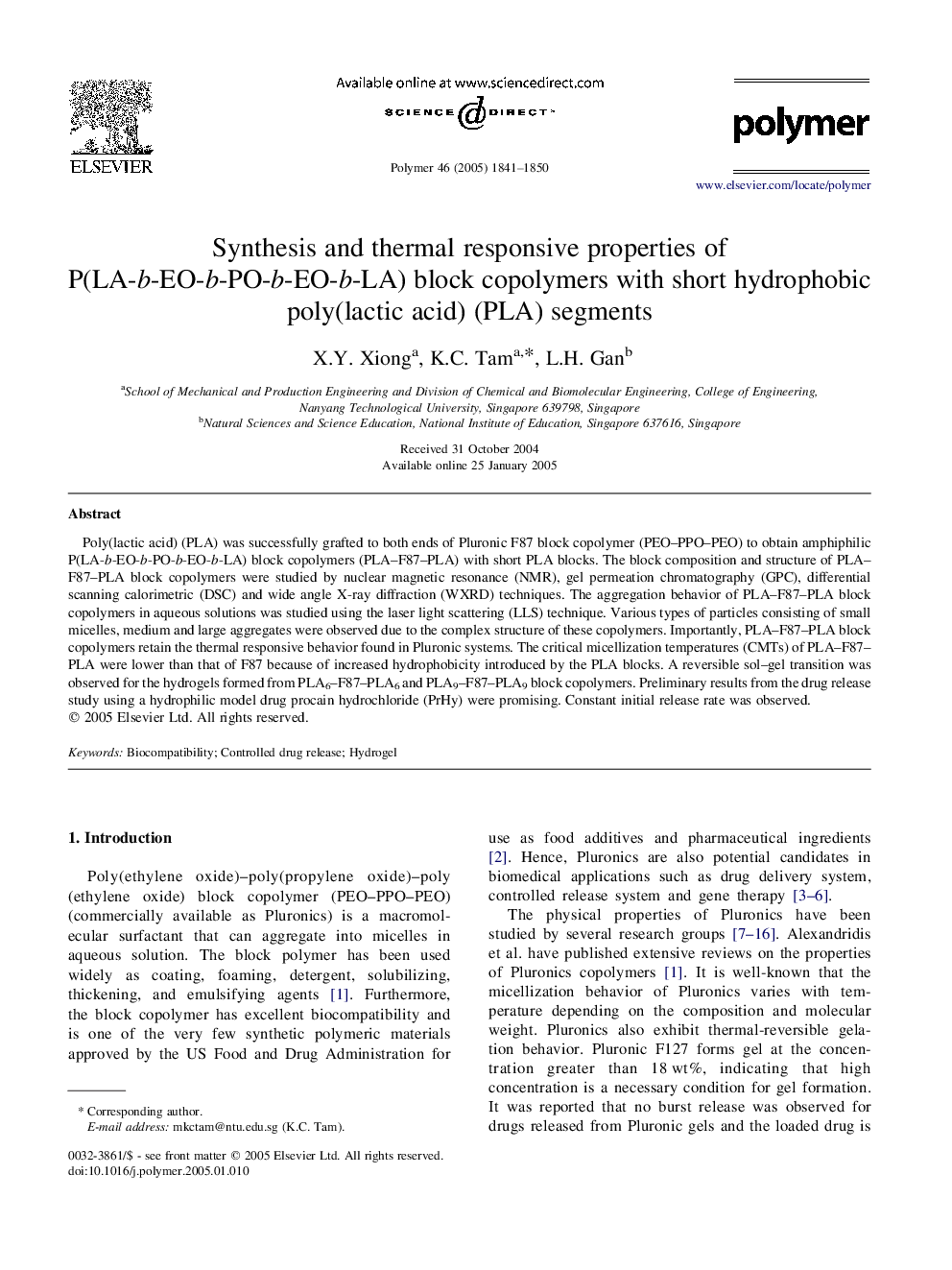| Article ID | Journal | Published Year | Pages | File Type |
|---|---|---|---|---|
| 5192036 | Polymer | 2005 | 10 Pages |
Abstract
Poly(lactic acid) (PLA) was successfully grafted to both ends of Pluronic F87 block copolymer (PEO-PPO-PEO) to obtain amphiphilic P(LA-b-EO-b-PO-b-EO-b-LA) block copolymers (PLA-F87-PLA) with short PLA blocks. The block composition and structure of PLA-F87-PLA block copolymers were studied by nuclear magnetic resonance (NMR), gel permeation chromatography (GPC), differential scanning calorimetric (DSC) and wide angle X-ray diffraction (WXRD) techniques. The aggregation behavior of PLA-F87-PLA block copolymers in aqueous solutions was studied using the laser light scattering (LLS) technique. Various types of particles consisting of small micelles, medium and large aggregates were observed due to the complex structure of these copolymers. Importantly, PLA-F87-PLA block copolymers retain the thermal responsive behavior found in Pluronic systems. The critical micellization temperatures (CMTs) of PLA-F87-PLA were lower than that of F87 because of increased hydrophobicity introduced by the PLA blocks. A reversible sol-gel transition was observed for the hydrogels formed from PLA6-F87-PLA6 and PLA9-F87-PLA9 block copolymers. Preliminary results from the drug release study using a hydrophilic model drug procain hydrochloride (PrHy) were promising. Constant initial release rate was observed.
Related Topics
Physical Sciences and Engineering
Chemistry
Organic Chemistry
Authors
X.Y. Xiong, K.C. Tam, L.H. Gan,
